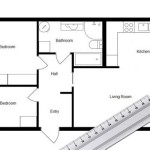Square Footage Calculator: Your Key to Accurate Laminate Flooring Estimates
Installing laminate flooring can significantly enhance the aesthetic appeal and value of a property. A crucial step in any flooring project, whether it be a do-it-yourself endeavor or one handled by professionals, is accurately calculating the required materials. An accurate square footage calculation prevents both shortages, which can lead to delays, and overages, which can result in unnecessary expenses. This article focuses on the importance of accurately determining the square footage, the methods involved, and the role a square footage calculator plays in ensuring efficient project execution.
Many factors influence the overall cost and success of a laminate flooring installation. These include the quality of the laminate, the complexity of the room's layout, and the installation method chosen. However, a precise estimate of the laminate needed is always paramount. An underestimated amount can lead to a halt in the project while waiting for additional materials, potentially disrupting the schedule and potentially causing color variations between different batches of laminate. Conversely, an overestimated amount ties up capital unnecessarily and generates surplus material.
Accurate estimation is most critical for budgeting. Laminate flooring costs vary based on thickness, wear layer, and appearance. Calculating the necessary square footage allows for a precise determination of the flooring cost, including the cost of underlayment, which is essential for moisture protection and sound absorption. Furthermore, accurate calculations facilitate waste management, reducing disposal costs and promoting environmentally responsible construction practices.
Manual Calculation of Square Footage
Before the advent of online calculators, the square footage was primarily determined using manual methods. While these methods are still useful, they require precision and care to prevent errors. The fundamental principle is to divide the area into geometric shapes, calculate the area of each shape, and then sum the individual areas to find the total area. The basic formula is length multiplied by width (Area = L x W).
For a simple rectangular or square room, measuring the length and width with a measuring tape is the first step. Accurate measurement is crucial; therefore, it is advisable to measure in feet and inches, converting inches to decimal feet if necessary. Once the length and width are determined, multiplying these two values provides the square footage. As an example, a room that is 12 feet long and 10 feet wide has an area of 120 square feet (12 ft x 10 ft = 120 sq ft).
Rooms with more complex shapes, such as L-shaped rooms, must be divided into simpler rectangles or squares. Measure the length and width of each individual section. Calculate the area of each section separately, and then add all of the individual areas to determine the total square footage of the room. For instance, if an L-shaped room is divided into two rectangles, one measuring 8 feet by 5 feet and the other measuring 6 feet by 4 feet, the areas are 40 square feet and 24 square feet respectively. The total area is then 64 square feet (40 sq ft + 24 sq ft = 64 sq ft).
Circular or semi-circular areas will require slightly more advanced mathematics. The area of a circle is calculated using the formula Area = πr², where π (pi) is approximately 3.14159 and r is the radius of the circle (the distance from the center of the circle to the edge). For a semi-circle, calculate the area of the full circle and then divide by two. If the room contains curved walls, approximate the curved area by dividing it into smaller, manageable shapes and sum those shapes.
Deductions for areas that will not be covered with laminate, such as existing cabinets or island units, are necessary. Measure the area of each of these obstructions and subtract them from the total square footage. This will provide a precise calculation of the actual area needing laminate floor covering. Keep accurate notes of all measurements and calculations to minimize errors.
After determining the bare minimum square footage required, an additional percentage should be added to account for waste and cuts, especially for rooms that are not perfectly square. A general rule is to add 5-10% for standard layouts and as much as 15% for more complex layouts with many corners or angled walls. This safeguard ensures sufficient material to accommodate waste during the cutting process and allows for matching patterns in areas with higher visibility.
Using a Square Footage Calculator for Laminate Flooring
A square footage calculator, whether online or built into a specific software application, provides a convenient and efficient alternative to manual calculations. These calculators generally require inputting the length and width of the room or different sections of the room, and then they automatically compute the square footage. Modern calculators also offer features like the ability to input dimensions in various units (feet, inches, meters, centimeters) and to account for waste percentages automatically, ensuring accuracy and streamlining the estimation process.
The use of a square footage calculator begins with selecting a reliable tool. Many websites offer free square footage calculators tailored for flooring projects. These tools often let users input the dimensions of the room (length, width), the shape of the room (rectangle, L-shape, circle), and the waste percentage. Some calculators also allow the entry of multiple room dimensions, facilitating calculations for the entire house or multiple rooms simultaneously. Selecting a calculator with features aligned to project requirements is crucial for simplifying the process.
Inputting the correct dimensions into the calculator is essential. As with manual calculations, accuracy in measuring the room is paramount. Ensure all measurements are precise and consistent, and that the correct units of measurement are selected in the calculator. Multiple measurements of the room are useful to mitigate potential errors. Most calculators provide a simple interface, guiding the user through the input process, making it easy to input length, width, and other necessary parameters.
Almost all square footage calculators allow for the waste percentage to be added. This percentage addresses the additional material needed to account for cuts, miscalculations, or damaged pieces. The waste percentage will vary depending on the complexity of the room's layout, the pattern of the flooring, and the installer's experience. For simpler rooms, a 5-10% waste factor is typically sufficient. For more complex rooms with angled walls or intricate patterns, a 15% or higher waste factor is recommended.
Beyond the basic square footage calculation, some advanced calculators also offer features such as unit conversion (converting between square feet, square meters, and square yards) and material estimation (estimating the number of laminate planks or tiles needed based on the dimensions and plank/tile size). These additional features can be especially useful for large and complex projects, as they further streamline the estimation process and minimize the risk of material shortages or overages.
The accuracy of a square footage calculator is contingent on the accuracy of the input. To validate the results, it is recommended to cross-reference the calculator's output with a manual calculation, especially for complex layouts. Double-checking the measurements and waste percentage will help ensure that the final estimate is as precise as possible. Using multiple calculators and comparing the results may also help identify discrepancies and potential errors.
Key Considerations for Laminate Flooring Calculations
Beyond calculating the bare minimum square footage, several key factors need consideration to ensure an accurate and practical estimate for laminate flooring projects. These considerations include accounting for the subfloor condition, understanding the specific requirements of the laminate product, and preparing appropriately for the installation process.
The condition of the subfloor significantly impacts the amount of material needed and the overall success of the installation. An uneven subfloor requires additional underlayment to create a level surface. This can affect the final height of the flooring and might require adjustments to doors and trim. Assessing the subfloor's levelness and making necessary preparations before calculating the square footage is crucial to avoid surprises during installation. Subfloor repairs or leveling might necessitate additional materials and labor costs. A professional assessment of the subfloor is often recommended, especially for older homes or those with known subfloor issues.
Different laminate products have varying dimensions, packaging, and installation requirements. Understanding these specifications is essential for accurate material estimation. Laminate flooring is typically sold in boxes, and each box contains a specific square footage. Determining how many boxes are needed based on the calculated square footage ensures that sufficient material is available while minimizing excess. Some laminate products also require specialized installation techniques or specific underlayment. Consulting the manufacturer's specifications and guidelines is crucial to avoid errors in material estimation and installation.
The installation process itself can impact material usage. Cutting laminate boards to fit around corners, doorways, or other obstructions generates waste. As discussed, adding a waste percentage to the calculated square footage is recommended. For DIY installations, the waste factor may be higher due to inexperience and potential cutting errors. The complexity of the room's layout also influences the waste percentage. Intricate patterns or angled walls require more cuts, increasing the likelihood of waste. Properly accounting for waste ensures that sufficient material is available to complete the project without delays or shortages.
Finally, considering accessories and finishing elements is essential for a comprehensive estimate. These elements include baseboards, transitions, and quarter-round molding. Accurate measurements of wall perimeters are critical for determining the amount of baseboard needed. Transition strips are necessary at doorways or where the laminate flooring meets other types of flooring. Quarter-round molding is used to cover the space between the baseboard and the flooring. Including these accessories in the estimate provides a more accurate cost projection and ensures a professional finished appearance.

Laminate Flooring Calculator Measure Square Corp

Flooring Calculator Cost Estimator

Flooring Calculator How Much Do I Need

Laminate Flooring Calculator Measure Square Corp

How To Calculate Square Footage Of A Room

Online Calculator Laminate Flooring The Calculation Of Number Planks

Flooring Calculator Cost Estimator

How To Determine Square Footage For Flooring Vermont Hardwoods

How To Measure Floor For Laminate 9 Steps With Pictures

How To Calculate Square Footage Of A Room







